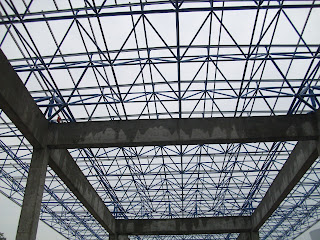Steel Space Frame vs. Truss & Rigid Frame: Which Roof System Is Right for You?
Introduction
When planning large-span buildings, choosing the right structural system is key. Here's how steel space frames, trusses, and rigid frames compare in terms of design flexibility, materials usage, construction speed, and cost.
Strengths & Highlights
-
Steel Space Frames
– Outstanding load distribution across three dimensions—exceptional stability and seismic resilience.
– Fast, modular assembly with factory-made precision (like Lego™) .
– Supports stunning architectural forms with minimal internal columns. -
Space Trusses
– Highly efficient at handling long spans using minimal material through axial load strategies.
– Flexible in form—works well for pitched or curved designs. -
Rigid Frames
– Reliable for clear spans under ~90 m, using standard moment connections.
– Simple to fabricate and quick to erect; great for industrial or retail use.
Practical Guidance
-
Choose space frames if your project prioritizes architectural expression, large span, and openness.
-
Opt for trusses when you need efficient long spans and moderately complex geometry.
-
Use rigid frames for efficient, cost-effective builds with standard forms and short to mid-span requirements.
Architect Insights
“Space frame distributes loads across 3D—making minimal material do more.”
— Industry analysis on structural efficiency.
“Rigid frames deliver large clearspan economy within typical building ranges (≤ 90 m).”
— Structural consulting note on frame benefits.
Call to Action
Still wondering which structure serves your project best?
[ Reach out now for a tailored comparison & cost estimate ]
Whether you’re designing a modern stadium, industrial pavilion, or elegant atrium—we’ll help you build smarter, stronger, and faster.




评论
发表评论